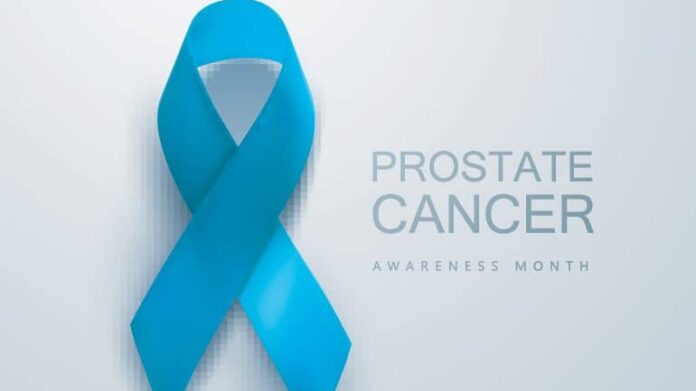
Prostate cancer is not a topic that many men like to talk about, but it is so important to be aware of the facts! Prostate cancer is the most common non-skin cancer in American men.2 It grows slowly, and most men can beat it with treatment. Nine times out of ten, prostate cancer can be cured when it’s caught early.1
What is the prostate?
The prostate is a small gland in men that is part of the reproductive system. It’s about the shape and size of a walnut. The prostate helps make semen, which carries sperm from the testicles.
Doctors aren’t always sure why one person gets cancer and another person does not. However, scientists have studied general patterns of cancer in the population to learn what things in the environment and what things people do that may increase a person’s chance of getting cancer. Anything that increases a person’s chance of getting a disease is called a risk factor. Some risk factors for cancer can be avoided, but some cannot. Prevention means avoiding the risk factors so you can lessen your chance of getting cancer.
How do you know if you are at risk for prostate cancer?
A lot of men with prostate cancer don’t have symptoms until their cancer gets worse. That’s why you should know your risks:3
- Age – About three out of every five prostate cancers are found in men over 65.
- Family history – Men whose fathers or brothers have prostate cancer are twice as likely to have it.
- Race – Men of African descent are more likely to get prostate cancer than men of other races.
- Weight – Being very overweight can lead to a delay in finding the cancer, so it has more time to grow.
- Diet – Men who eat a lot of red meat and high-fat dairy, and don’t eat many fruits and vegetables, have a higher risk of getting prostate cancer.
Getting checked for prostate cancer
There are a few prostate cancer testing options available for men. However, since most men don’t have any symptoms, it is often found during a routine digital rectal exam (DRE). There is also a blood test, called the prostate specific antigen (PSA) test. It screens for raised levels of PSA, a protein made by the prostate.4
Because prostate cancer grows so slowly, some men choose not to have screenings, or choose not to treat their prostate cancer if they do have it. This is a decision you should make after talking with your doctor.
While most men don’t notice any symptoms, men who do may notice:5
- Urinating a lot, especially at night
- Trouble starting or controlling urination, weak or interrupted flow, or pain
- Trouble getting an erection
- Painful ejaculation, or blood or urine in semen
- Pain or stiffness in the lower back, hips or upper thighs
Treatment options
When caught early, nine in ten prostate cancers can be cured.1 Treatments include:6
- Checking the cancer for signs that it is getting worse. Since prostate cancer grows slowly, sometimes men will not have treatment at this early stage to avoid the side effects.
- Surgery. The prostate gland and some nearby tissue are removed.
- Radiation. Radioactive beams or metal pellets kill the cancer cells.
- Cryosurgery. Instead of removing the prostate, surgeons destroy it using very cold gas.
- Hormone therapy. The cancer stops growing or shrinks, so it is easier to treat.
- Chemotherapy, if the cancer has spread to other parts of the body.
- Vaccination. The immune system is triggered to attack prostate cancer cells in the body.
It is important to talk to your doctor about what screenings are right for you. You can also learn more from the American Cancer Society.
1. American Cancer Society, Survival rates for prostate cancer (accessed January 2015): cancer.org
2. American Cancer Society, What are the key statistics about prostate cancer? (accessed January 2015): cancer.org
3. American Cancer Society, What are the risk factors for prostate cancer? (accessed January 2015): cancer.org
4. American Cancer Society, Can prostate cancer be found early? (accessed January 2015): cancer.org
5. Prostate Cancer Foundation, Prostate Cancer Symptoms (accessed January 2015): pcf.org
6. American Cancer Society, How is prostate cancer treated? (accessed January 2015): cancer.org

